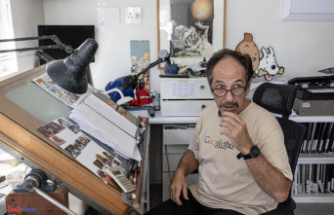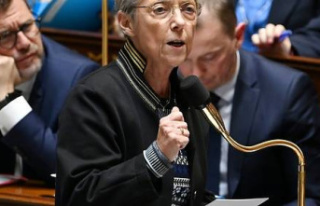The High Council for the Family, Childhood and Age (HCFEA), charged by the Prime Minister with providing forward-looking and cross-cutting expertise on issues related to the family and childhood, has just published a report on the psychological suffering of children and the means at our disposal to remedy it. This work is part of a particularly worrying context, in which we observe an aggravation of the mental health problems of young people, which even leads to an increase in the suicide rate. The situation has reached a point of urgency such that healthcare groups have multiplied the platforms and the alerts.
The past three years – marked by anti-Covid policies that have had a severe impact on young people – have certainly contributed to aggravating the problem. But it is not limited to that, far from it.
Mental health is a public health issue of primary importance in children, in France as in Western countries. When they occur early, mental disorders and psychic suffering impact a lifetime: the development of the child, his emotions, his relationship to himself, to language and to the body, his family, friendly, romantic, social ties , his school career and his professional future are turned upside down…
We would therefore expect everything to be done to remedy this. However, the HCFEA report, on the contrary, highlights an impasse in terms of care. It alerts in particular to the fact that, in the absence of appropriate care, the consumption of psychotropic drugs is increasing exponentially, well beyond regulatory frameworks and international scientific consensus.
However, in France, as in most European countries, the first-line care recommended by the health authorities (Haute Autorité de santé (HAS), National Medicines Safety Agency (ANSM)) for mental disorders in children are not pharmacological. The following are indeed recommended as a matter of priority:
Psychotherapeutic practices: psychoanalysis, psychodynamic and clinical practices, cognitive and behavioral therapies, family and group therapies...
Educational practices,
Prevention and social intervention practices.
For certain cases only, a drug treatment can be prescribed as a second intention, in support of the psychological, educational and social accompaniment of the child and his family. And even then, the international consensus is reserved and insists on the importance of surveillance and the role of health and drug safety agencies.
These reservations are explained by the scarcity of robust studies on the efficacy of drug treatments in children, by the existence of significant adverse effects and by an often unfavorable benefit/risk balance – which leads to a limited number marketing authorizations (AMM) for psychotropic drugs in the pediatric population. When such a drug is authorized in children, its prescription is accompanied by strict recommendations.
However, and in flagrant contradiction with these scientific and regulatory requirements, the data reported by the HCFEA, extracted from studies by the ANSM (National Medicines Safety Agency) and the EPI-PHARE scientific interest group specializing in epidemiological studies of health products show a constant increase in the consumption of psychotropic drugs in children.
In 2021 alone, consumption among children and adolescents increased by:
7.5% for antipsychotics,
16% for anxiolytics,
23% for antidepressants,
224% for hypnotics.
More broadly, the analysis of the consumption of 59 classes of psychotropic drugs dispensed by prescription in pharmacies among 0-19 year olds for all beneficiaries of the general scheme shows that, for each year between 2018 and 2021, consumption is higher than the previous year and lower than the following year. This suggests a continuous increase in consumption for all drugs.
This "overconsumption", which is "overmedication", can be expressed in terms of the difference between the number of deliveries observed and the number of deliveries expected. This increase concerns tens of thousands of children. The number of psychotropic drug dispensations in 2021 among 0-19 year olds is in the millions and is now significantly higher than in 2018, regardless of drug subclass.
These levels of increase are disproportionate to those observed in the general adult population. They are 2 to 20 times higher, even though the number of marketing authorizations in the pediatric population is very limited for psychotropic drugs. This observation suggests that children are more exposed than adults to psychic suffering, but above all that they are exposed to increasing, and in this case unsuitable, medication.
These phenomena are aggravated by the Covid crisis, but they predate it. Indeed, analysis of health databases over the period 2014-2021 already shows a continued increase:
9.48% for dopaminergics,
27.7% for anticholinergics,
48.54% for antipsychotics,
62.58% for antidepressants,
78.07% for psychostimulants,
155.48% for hypnotics and sedatives.
Only the consumption of anxiolytics fell slightly (-3.46%) over the period. In the years 2000-2010, several studies showed that the latter was particularly high in France, especially in the pediatric population. Reports and recommendations from health authorities therefore called for increased vigilance regarding the prescription of these molecules, because of their significant adverse effects and their addictogenic nature. We can think that these recommendations have had an effect on the prescription, even if it remains at a high level. But it is possible that some of these prescriptions were carried over to hypnotics, which share with them several pharmacological properties, and whose consumption has increased very sharply over the same period.
The finding is the same if we reason in terms of prevalence of psychotropic drug use among 0-20 year olds between 2010 and 2021 (prevalence being the frequency of occurrence of a health phenomenon in a population for a given period) :
From 2.01% to 2.72% for hypnotics and anxiolytics, an increase of approximately 35%,
From 0.28% to 0.60% for antipsychotics, an increase of approximately 114%,
From 0.23% to 0.57% for psychostimulants, an increase of approximately 148%,
From 0.29 to 0.81% for antidepressants and normothymics, an increase of approximately 179%.
Openmédic 2021 data suggests that more than 5% of the pediatric population could be affected. And to the extent that these consumption rates incorporate data from 0-3 year olds and 3-6 year olds, for whom psychotropic prescriptions remain rare, the prevalence among 6-17 year olds may in fact be significantly higher. It must be the subject of urgent attention and mobilization of public authorities and health authorities.
Indeed, the HCFEA report insists on non-compliance with marketing authorizations and on the transgression of the recommendations of health agencies and scientific consensus. Already in 2009, a prospective study showed that 68% of psychotropic prescriptions made in a Parisian pediatric hospital were off-label. These off-label prescriptions affected 66% of young patients and mainly concerned the prescription in children of drugs reserved for adults.
As an example, consider the case of methylphenidate (Ritalin, Concerta, etc.) that the HCFEA report documents in depth. Between 2010 and 2019, the prescription of this psychostimulant in children increased by 116%.
This increase in consumption is coupled with a systematic transgression of marketing authorizations and prescription recommendations:
Prescriptions before age 6.
Long treatment durations, while studies and health agencies recommend short-term prescriptions: 5.5 years for children aged 6 who started treatment with methylphenidate in 2011, and 7.1 years for children aged 6 years hospitalized with an ADHD diagnosis in 2011 – and increasing durations between 2011 and 2019. The youngest children have the longest prescription durations.
Non-diagnosis prescriptions or in the context of psychiatric diagnoses for which the medicine does not have a marketing authorization in children.
Co-prescriptions of other psychotropics, often reserved for adults and very far from their marketing authorization area. 22.8% of children on methylphenidate in 2018 received over the following 12 months at least one other psychotropic drug belonging to various pharmacological classes: neuroleptics (64.5%), anxiolytics (35.5%), antidepressants (16.2 %), antiepileptics (11%), hypnotics (4.8%) and antiparkinsonians (3%). The main molecules prescribed are risperidone (10.6%), hydroxyzine (6%), cyamemazine (3.9%), aripiprazole (2.7%), sertraline (1.4%), valproic acid (1.1%), and fluoxetine (1%). Of these children, 63.5% received two treatments, 20.8% received three psychotropics, 8.5% received four, and 6.9% were prescribed at least five psychotropics within 12 months of the first. prescription of methylphenidate. These co-prescriptions are not the subject of any scientific study or validation.
Non-compliance with the regulatory conditions for prescription and renewal by specialist doctors or specialized services: the recommendations for compulsory initiation in a hospital environment in force until September 2021 were not respected in almost a quarter of cases. In addition, the annual renewal of the methylphenidate prescription must be done during a hospital consultation aiming, beyond the treatment, the follow-up of the child and the accompaniment of the families. This was not respected for nearly one in two children in 2015, 2016 and 2017.
Substitution of psychotherapeutic, educational and social practices by medicinal practices: health databases show that between 2011 and 2019, across all prescribing hospital departments, 84.2% to 87.1% of children treated do not have not benefited from medical follow-up by the hospital department that started the treatment. In addition, while the consumption of methylphenidate has continued to grow between 2010 and 2019 (116%), the number of visits to Medico-Psycho-Pedagogical Centers by children receiving this prescription has been divided by four over the same period. .
School determination of prescription: French children and adolescents are on average 54% more likely to be prescribed a psychostimulant treatment if they are born in December than if they are born in January. Systematically between 2010 and 2019, the number of initiations increases over the months of the year, to fall sharply in January of the following year. This suggests that the prescription is not driven by rigorous diagnostic evaluation, but results from a misinterpretation of the greater psychological immaturity of younger children, and their logically lower attention spans.
If we still have few solid studies on the effectiveness of pharmacological treatments in mental disorders in children, the same is not true in adults. What was missing so far was not data, but comprehensive and solid summaries. A recent publication in World Psychiatry came to remedy this. This mega-analysis synthesizes the results of 102 meta-analyses, bringing together 3,782 randomized controlled trials and 650,514 patients – and concerns the evaluations of the effectiveness of pharmacological treatments published between 2014 and 2021 for the eleven main mental disorders.
The results show that the difference in results between the treated groups and the control groups (placebo and usual treatments) is very small. This is a result that one can, at the risk of understatement, consider unsatisfactory.
The graphical representation of shifting distributions provides a more intuitive understanding:
For the authors, these results are not contingent. Investing more in the same direction will not change this: a ceiling has been reached in the effectiveness of current pharmacological treatments. This is why they call for a paradigm shift in psychiatric research so that further progress can be made.
In the meantime, we must wonder about the relevance of allowing the heavy trend to increase the prescription of psychotropic drugs in children, documented here, to continue, despite questionable efficacy and safety… Especially since other strategies (psychotherapeutic, educational, social), admittedly more complex, would better alleviate their psychological suffering and lessen its consequences if they were truly implemented.
Transparent communication is needed about the reality of what pharmacological treatment can really do. Their overuse often rules out the possibility of resorting to other therapeutic strategies, which can constitute an unacceptable loss of opportunity. There is an urgent need to align ethics, scientific data, and communication aimed at patients and the general public in this area.
Sébastien Ponnou, psychoanalyst, lecturer in Educational Sciences at the University of Rouen-Normandie, and Xavier Briffault, researcher in social sciences and epistemology of mental health at the Center for Research in Medicine, Sciences, Health, Mental Health, company (CERMES3).
This article is republished from The Conversation under a Creative Commons license. Read the original article.












